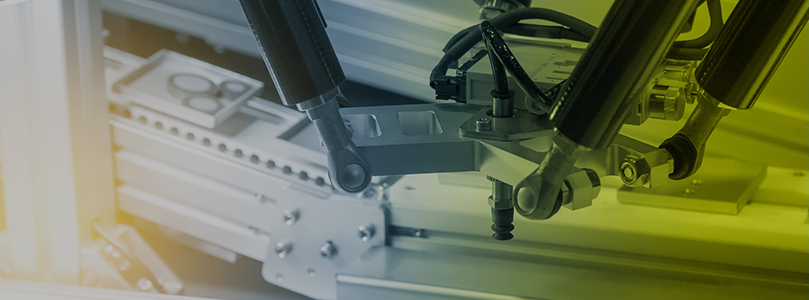The Adaptation of Pneumatics

It may be surprising to find out with all the changes in manufacturing technologies, the use of pneumatics continues to grow. As it turns out, pneumatics and hydraulics are playing a key role in Industry 4.0. But let’s not get ahead of ourselves.
What is Pneumatics?
Pneumatics is the science of putting compressed air or gas to work. By compressing gas and keeping it stored under pressure, energy is created. Pneumatic systems take this energy and use it towards accomplishing specific goals. Hydraulics is a very similar technology; however, liquid is used to create this energy instead of air. There are countless everyday applications that use pneumatics from industrial drills, automotive brakes, power tools, even toys.
To simplify, pneumatic systems need 5 components to work:
- A compressor (to make air);
- A reserve (to store that air);
- A minimum of one valve (to control the air);
- A circuit (to move air between components);
- And an actuator (to leverage the air and accomplish the task at hand).
It is a very old technology, which can potentially mean it won’t keep pace with today’s fast pace…but it does!
Why Use Pneumatics?
Why not just make everything electric? Or use hydraulics? Like anything else, it’s simply a matter of picking the right tool for the job. Pneumatics are a safe high-speed option. They do not use electricity where the work is executed and is self-cooling. This eliminates the risk of over-heating or generating a spark. With fires and explosions taken out of the equation, it becomes a very attractive source for underground applications. Leakage is possible in both hydraulic & pneumatic systems, but the liquid used in the former is flammable whereas air is not.
Another difference between pneumatics and hydraulics is their makeup. Hydraulics are made from heavy metals to manage the higher pressure they generate. Pneumatic systems require lower force and lower pressure which means they can use industrial plastics. This makes them lighter and more practical for certain applications like toys.
The reason pneumatics are not applied to everything is that they are not built for precision. Due to the unpredictable flow of its movement, air can reduce accuracy and responsiveness. Also, as mentioned above, pneumatic systems do not generate the same amount of power or force as a hydraulic system can, but they do move a lot faster.
Staying Power
It’s surprising that the simple concept of compressing air has not only withstood the massive evolution of technology but indeed continues to grow. How is it keeping up? Well, pneumatics are getting smarter!
This is a science that has adapted itself to thrive in Industry 4.0. Leading component manufacturers have introduced and continue to produce beefed-up actuators, allowing pneumatic systems to gather and process smart data. Sensors are being installed in hoses, connectors, valves and so on for thorough measurements to deliver a complete performance overview.
Continuous position sensors allow for remote tracking of system performance which improves overall factory efficiency and enable automation. By improving the reliability of a pneumatic system’s output, their appeal is growing to industries where they may have been previously overlooked. Today through smart sensors, pneumatics is used to optimize operations, manage preventative maintenance, and keep an eye on quality.
And the best part? These sensors can be mounted on existing cylinders. There is no reason to re-invent the wheel…or waste money by investing in new hardware. Common equipment can accommodate simple adapters to install sensors throughout. Essentially, it’s a very practical way to transform an old factory into an IIoT manufacturing facility.
For more information on pneumatics testing or smart manufacturing, please contact Averna.
Looking for ways to manage that smart data?
Find out why Proligent Analytics has been an industry favorite for over 15 years.
Get in touch with our experts or navigate through our resource center.
